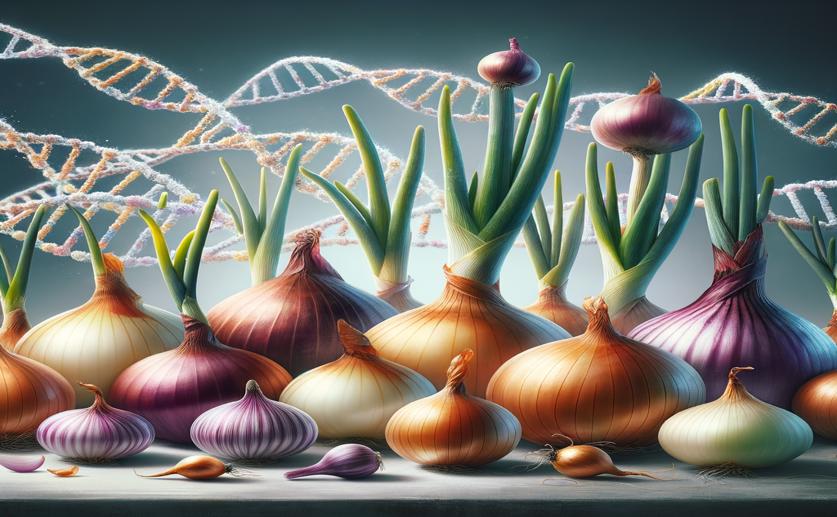
Understanding Genetic Diversity and Family Tree of Onions Using DNA Markers
Jenn Hoskins
7th June, 2024

Image Source: Natural Science News, 2024
Key Findings
- Researchers at Central Agricultural University studied the genetic diversity of 95 Allium accessions using 19 SSR markers
- They found 92 polymorphic loci with an average of 4.84 loci per marker, showing wide genetic variability
- The study identified four main genetic clusters and 13 sub-clusters, aiding future breeding programs for better Allium crops
References
Main Study
1) Deciphering genetic diversity phylogeny and assembly of Allium species through micro satellite markers on nuclear DNA.
Published 15th June, 2024 (future Journal edition)
https://doi.org/10.1016/j.heliyon.2024.e31650
Related Studies
2) Genome-wide assessment of population structure and genetic diversity of Chinese Lou onion using specific length amplified fragment (SLAF) sequencing.
3) Molecular marker-based characterization of cytoplasm and restorer of male sterility (Ms) locus in commercially grown onions in India.
4) Using Transcriptome Analysis to Explore Gray Mold Resistance-Related Genes in Onion (Alliumcepa L.).
5) Anthracnose of Onion (Allium cepa L.): A Twister Disease.



 6th June, 2024 | Jim Crocker
6th June, 2024 | Jim Crocker